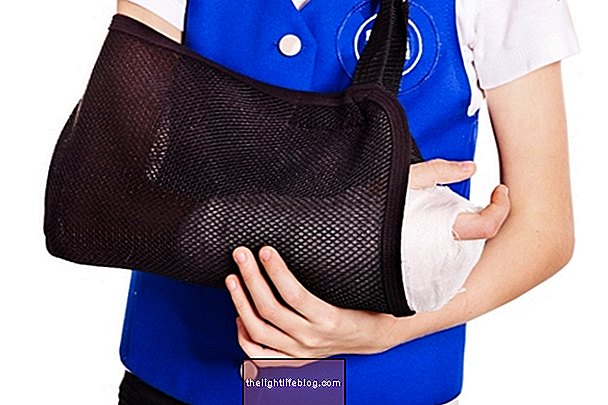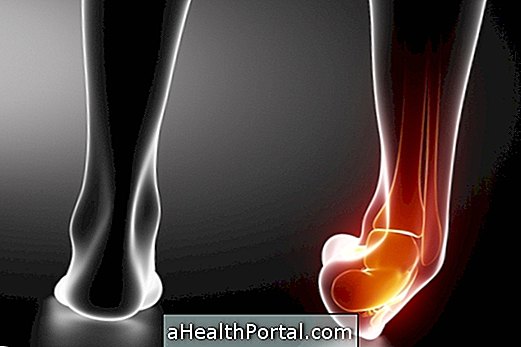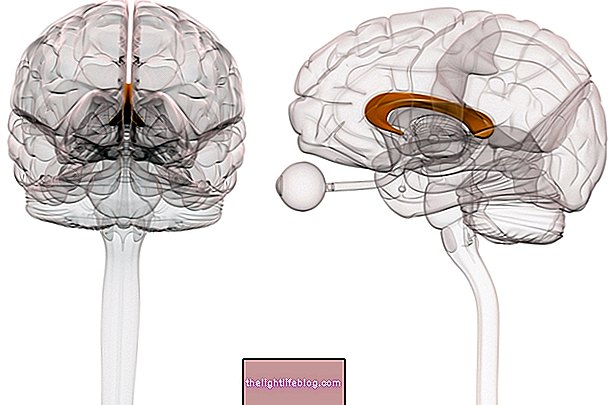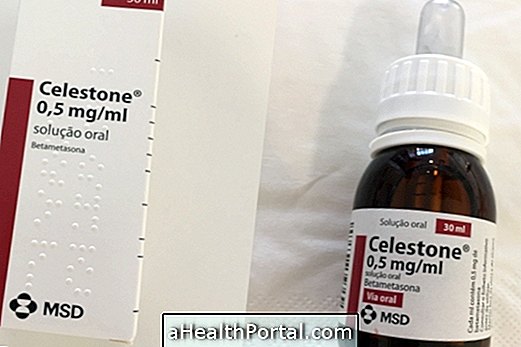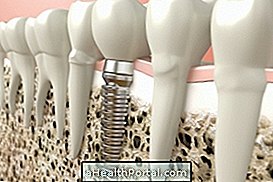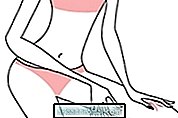A good home treatment for inflamed bunions, which often relieves pain and discomfort, is to make a foot-ladder by placing the 'sauce' feet in a bowl with warm water and 2 tablespoons of coarse salt or Epsom salts. Massaging the feet with sweet almond oil is also an excellent strategy to improve blood circulation and relieve pain, redness and swelling of the feet.
After doing this, staying about 30 min lying down with your feet elevated, on the arm of the couch or cushions is also a good home strategy to deflate your feet, which also contributes to symptom relief.
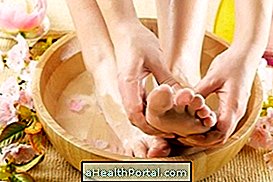

Other treatments
It may also be helpful to use splints or finger retainers that attempt to reposition the affected bones. These can be purchased over the internet at pharmacies or drugstores. Passing an anti-inflammatory ointment such as Cataflan or Voltaren, may be indicated on the days when you need to wear a high shoe, but if the bunion is too big and is bothering too much, as a last resort you can have surgery. Especially when the person suffers from daily foot pain or has some other complication, such as rheumatoid arthritis, for example.
The surgery is usually done with local anesthesia and in it the orthopedic surgeon repositions the finger closest to its original location, scraping the bone that has deviated laterally. After surgery, you should avoid putting the weight of the body on the foot operated by approximately, gradually returning to your daily activities. Physical therapy can be of great help in this recovery phase.
Here's how to do an incredible foot massage with marbles in this video:

What is Joanete:
The bunion (Hallux Valgo) is a diversion of the fingers into the inside of the foot, misaligning the bones and joints. The most affected finger is the big toe, but in some people the bunion is formed in the pinky little finger.
Bunion symptoms are related to deviations of the big toe or the little toe, and may include:
- Change in the shape of the foot, with formation of a protuberance on the side of the foot;
- Deviation of the affected finger over others;
- Dry skin and redness on the affected finger;
- Pain in the finger when walking;
- Swelling of the affected finger joint.
Discomfort caused by the bunion can usually be alleviated with the use of orthopedic insoles, finger separators, use of anti-inflammatory drugs or foot massages. Here's how to take care of the bunion and relieve the symptoms.


What can cause a bunion
The bunion is formed mainly in women in the 20's and 40's due to the use of high heels for a long time because it diverts the big toe inward towards the other toes, and so it becomes more prominent.
This change in feet usually occurs more often in people in the same family, so people with a family history of a bunion should avoid wearing tight shoes or daily high heels.
People who have health problems, such as rheumatoid arthritis or gout, are more prone to their development, so they need to take extra care.
How to prevent it from forming again
The best way to try to avoid the development of a bunion is to wear comfortable shoes that allow the toes to move freely. Shoes with very high heels can also increase the pressure on the fingers, facilitating the appearance of bunions, so it is not advisable to wear shoes or sandals with heels more than 5 cm high.
Watch the following video and see what exercises you can do to prevent the bunion:



